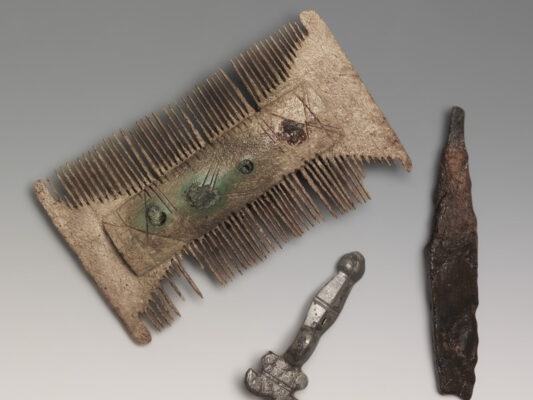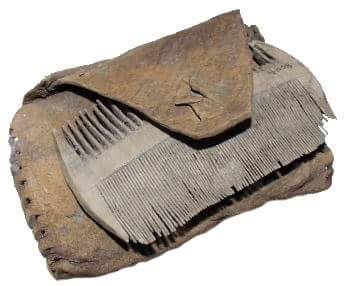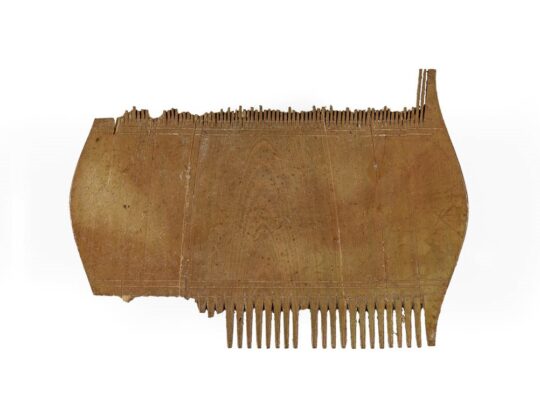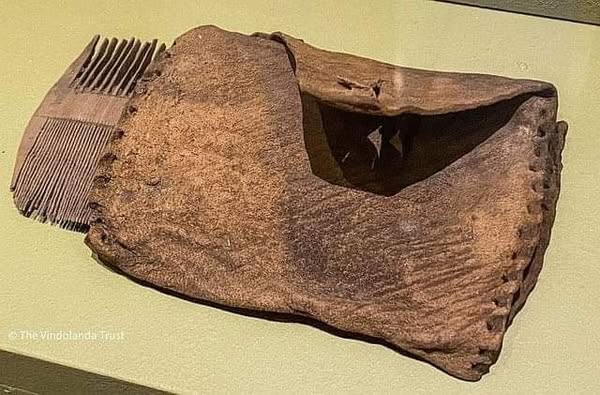Discovered near Hadrian’s Wall, wooden combs at Vindolanda complete with its leather case dating back to 100 AD provides a fascinating insight into the daily life of the Roman elite. This rare artifact, found within the Roman Commanding Officer’s Residence at Vindolanda, showcases the sophistication and practicality of Roman grooming tools nearly 2,000 years ago. Let’s explore ancient civilization with archeology.dulichvn.net..

A Timeless Discovery: The Vindolanda wooden combs
1. The Historic Significance of Vindolanda
- Vindolanda was a key Roman fort near Hadrian’s Wall, a defensive barrier marking the edge of the Roman Empire.
- Excavations have unearthed countless artifacts revealing life on the frontier.
- The comb’s discovery highlights the personal lives of Roman soldiers and their families.
2. Craftsmanship and Design of the Comb
The comb, crafted from wood, demonstrates intricate detailing and advanced carving techniques.
Its accompanying leather case reflects the value placed on personal hygiene and grooming tools.
These items were likely owned by an individual of high rank, such as the commanding officer.
3. Preservation Through Time
- The unique soil conditions at Vindolanda helped preserve organic materials like wood and leather.
- Such preservation provides historians with a rare opportunity to study ancient Roman lifestyle artifacts.
- The comb’s condition offers a window into how Romans maintained personal grooming standards.

Roman Grooming Culture Revealed
1. Importance of Hygiene in Roman Society
- Romans valued cleanliness, often using tools like combs, mirrors, and tweezers.
- Public bathhouses were central to Roman culture, emphasizing personal care.
- The Vindolanda comb showcases this tradition even at remote military outposts.
2. Social Status and Personal Items
- The quality of grooming tools often reflected an individual’s rank and wealth.
- Possession of such a comb in Vindolanda highlights the commanding officer’s status.
- Items like these bridged the gap between function and luxury in Roman society.
3. The Broader Context of Roman Artifacts
- Similar finds across Roman sites underscore the widespread use of such tools.
- These objects narrate stories of daily life, far beyond grand architectural achievements.
- They remind us of the humanity shared across centuries.

Vindolanda’s Legacy in Archaeology
1. A Treasure Trove of Roman Artifacts
- Vindolanda has yielded numerous artifacts, from writing tablets to footwear.
- Each find contributes to a deeper understanding of Roman frontier life.
- The wooden comb is a jewel among these discoveries.
2. Insights Gained from Everyday Items
- Small, personal items provide a more intimate view of history than grand monuments.
- They reveal the habits, preferences, and routines of ancient people.
- Vindolanda’s finds humanize the Roman soldiers who lived and worked there.
3. Ongoing Excavations and Discoveries
- Vindolanda continues to be a site of active archaeological research.
- Each excavation season brings new revelations about Roman life.
- The wooden comb is just one example of how Vindolanda connects us to the past.
See more: The Antiochos Grandeur World’s Largest Intact Mosaic
Conclusion
The wooden comb from Vindolanda, preserved alongside its leather case, is a tangible link to the past. It not only exemplifies Roman craftsmanship but also highlights the importance of personal grooming and status in ancient society. As a testament to the daily lives of those who lived nearly 2,000 years ago, it enriches our understanding of the Roman world and reminds us of our shared human history.


CÁC TIN KHÁC
Mark Twain & Olivia Langdon: A 36-Year Love Story Filled with Laughter and Devotion
The Tollund Man: A 2,400-Year-Old Mystery Preserved in a Danish Bog
Skara Brae: Scotland’s Hidden Neolithic Village
Porta Nigra: The Hidden Depths of Trier’s Iconic Roman Gate